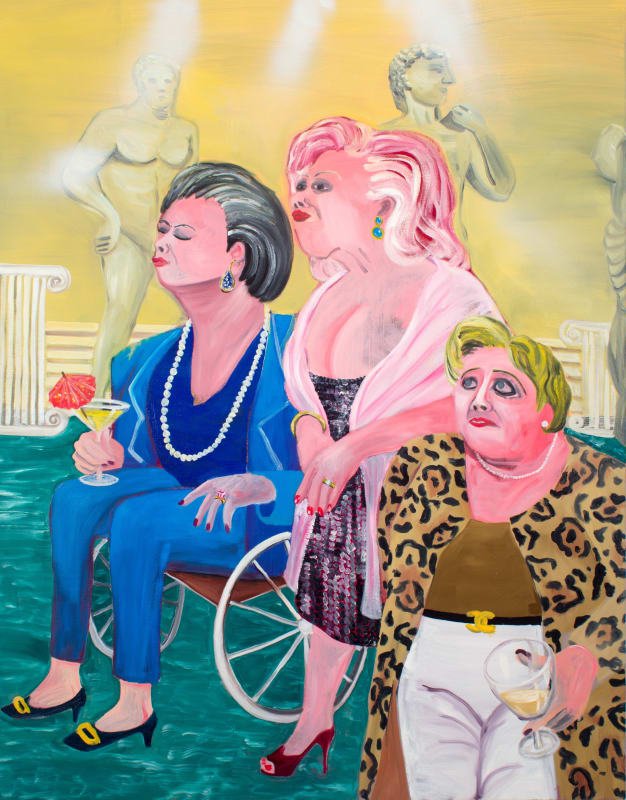Just past the metal detectors at the entrance to the Metropolitan Museum, 11 people cluster together, tablets and smartphones raised in front of their faces, photographing the central information desk and the arches beyond. Just to the right of the kiosk, five people squeeze and half-squat together while one of them angles his selfie stick. On the other side of the desk, a family of six gets its bearings: four by looking at their immediate surroundings through screens; one by queuing up her audio guide; the sixth, a baby in his stroller, by quietly waiting. Right next to them — awkwardly close, in fact — a stylishly dressed man (a local, surely) types on his raised smartphone, possibly sending a friend a mocking message about the device-toting family. Inside the galleries, the situation is even more chaotic — three friends leap amid the Assyrian reliefs while a fourth attempts to photograph them mid-jump; visitors lounge around the Temple of Dendur consulting their phones and ignoring the antiquities; wandering museum-goers, faces bent toward their devices, strike silhouettes eerily similar to the ancient and headless marble statues looming nearby. These are not scenes from a recent Saturday at the Met — though they could be — but details from paintings and drawings in Hai-Hsin Huang’s exhibition A Museum Show at the Chinese American Arts Council.
Huang’s earlier works (one of which, full disclosure, I included in an exhibition I curated three years ago) often feature demented family scenes, but her latest series focuses on the foibles of a more public institution. The paintings, with their unflattering figures rendered in unnatural tones from improbable angles, evoke some absurdist fusion of Jules de Balincourt and Peter Saul. Her drawings, especially the 10-foot-wide “The MET” (2014) and seven-and-a-half-foot-wide “The MET #2” (2016), fall on the more satiric end of the crowd comedy spectrum that culminates in the symphonic pandemonium of Where’s Waldo? and Hilary Harkness. The drawings’ plethora of strange details rewards precisely the type of close and sustained viewing of which the works’ subjects are clearly incapable.
Meanwhile, the paintings in A Museum Show, with two exceptions, capture moments of quiet contemplation — or total, #EmptyMet calm. A series of smaller canvases depict display cases containing Greek vases or the bases of pedestals holding marble busts. In another, an older woman who seems to have stepped out of Cindy Sherman’s series of faux portraits of society women stares blankly at an artifact. The exhibition’s centerpiece, “China Wing” (2016), is closer in spirit to the drawings and Huang’s more manic earlier work. The cinematic tableau shows 12 figures sprawled and stretched out in front of a recessed display of historical ceramics, each with a mask-like grin on their faces (fleetingly evoking Yue Minjun) and — save a couple — device in hand. It’s the sort of high culture-meets-the masses satire and “that’s so true!” image that you’d expect to find on the cover of the New Yorker. The exhibition’s most startling work, though, doesn’t feature any tablet-toting visitors or bleary-eyed socialites; “MoMA” (2016) shows a snaking line of visitors waiting for the coat check and, above it, a matching line of coats on hangers waiting for their owners. The pleasingly symmetrical composition of pinks, blues, and black completes Huang’s vision of the museum experience as its own kind of show.
These playful, melancholy, and crazed scenes depict the museum not only as a place where artifacts are displayed, but also where people display themselves, and where the supporting structures of display — the security guards, gift shops, coat rooms, pedestals, floorboards, flower bouquets, and more — can be just as compelling as what’s being exhibited. Huang’s approach to this material melds the sensibilities of a caricaturist and an anthropologist. In the paintings and drawings of A Museum Show, the museum is the show.



